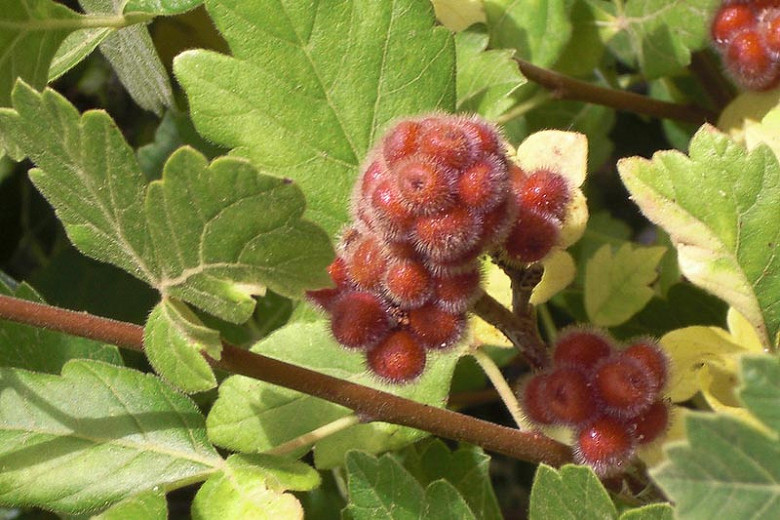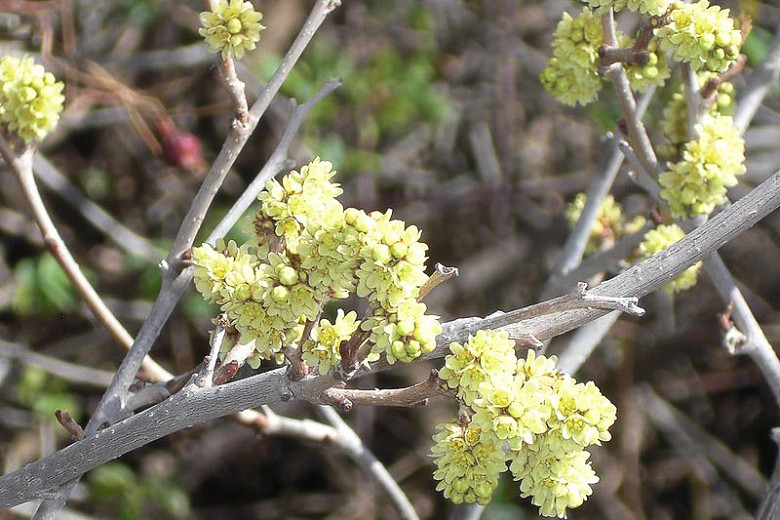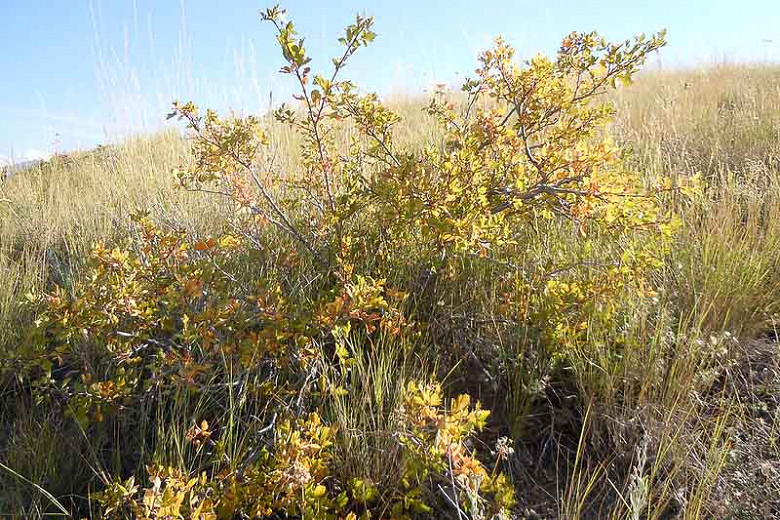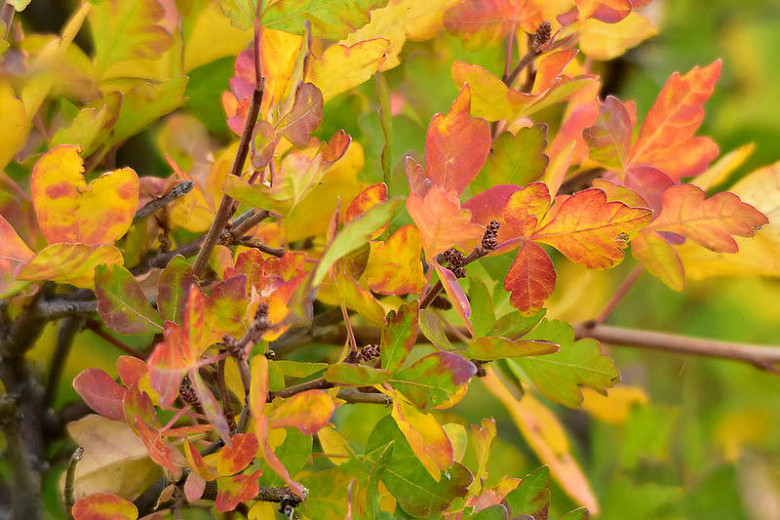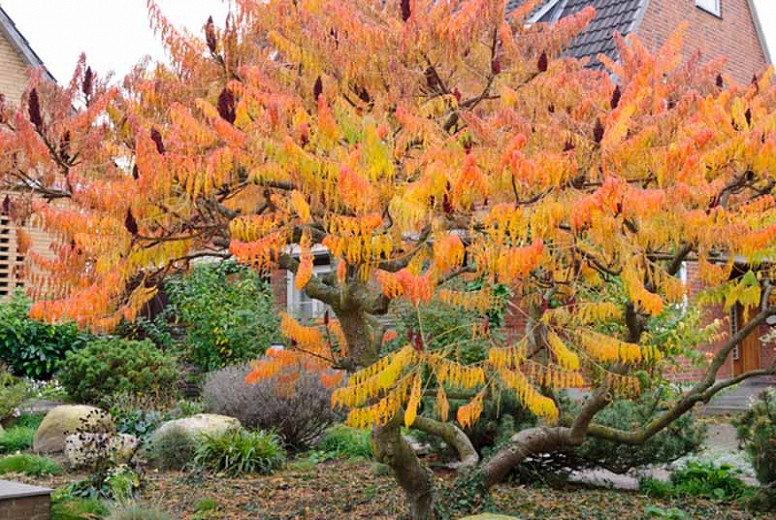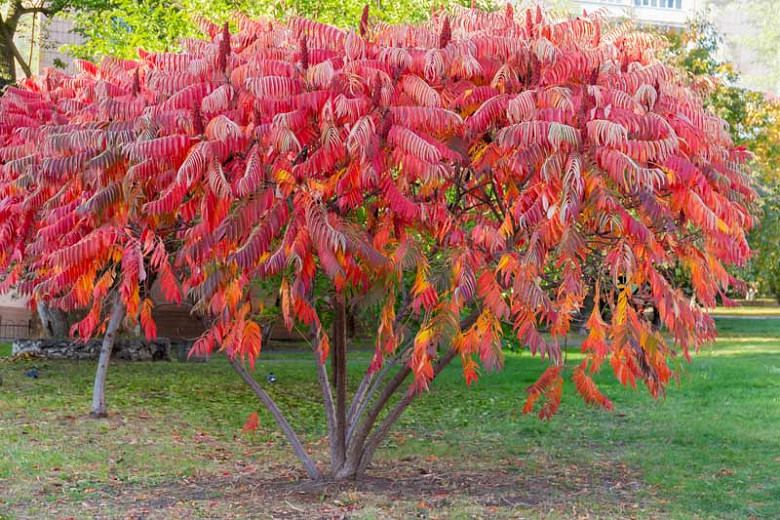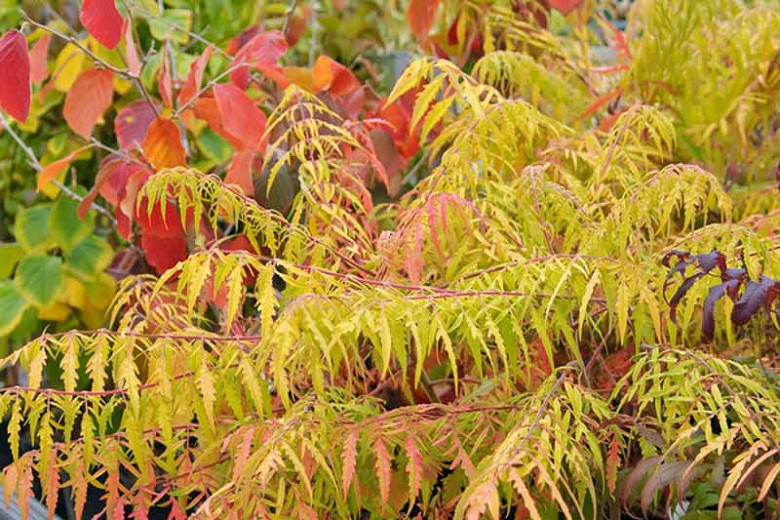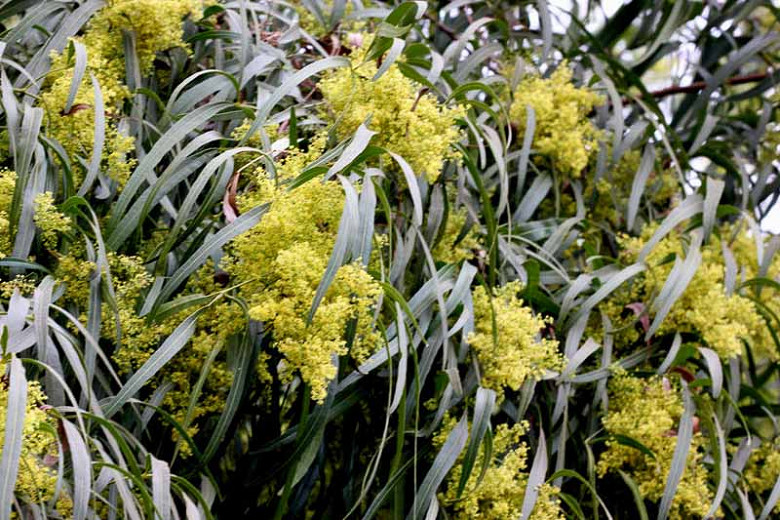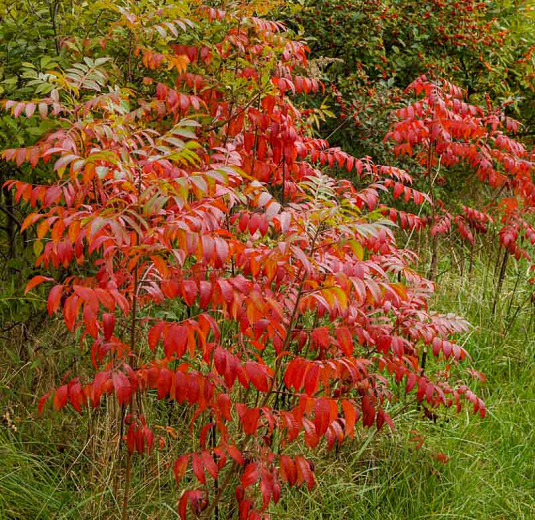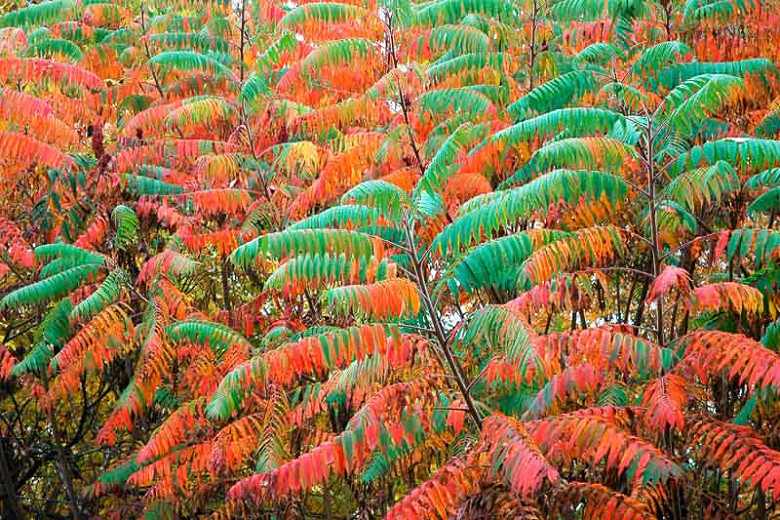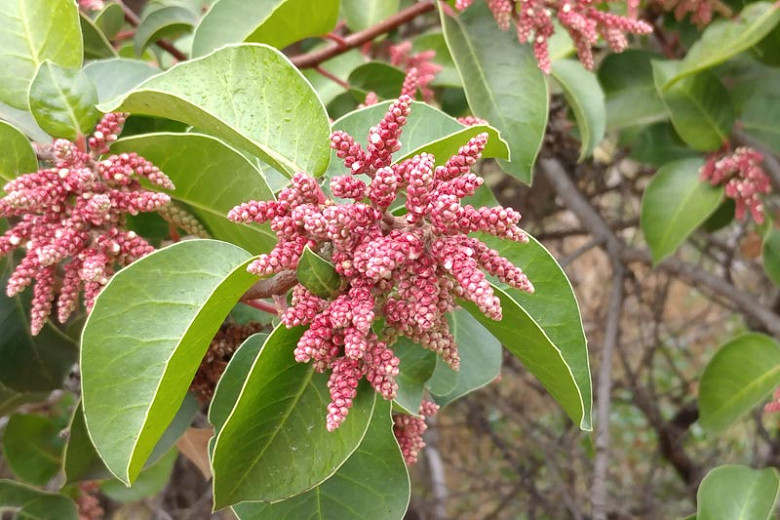Rhus trilobata (Skunkbush Sumac)
Noted for its 3 seasons of interest, Rhus trilobata (Skunkbush Sumac) is an upright arching deciduous shrub forming rounded, moundlike, or upright thickets. Native to western North America, it produces female or male plants. In spring, before the foliage emerges, male plants feature inconspicuous catkins while female plants boast clustered spikes of creamy yellow flowers. The pollinated female flowers are followed by edible, hairy, red berries in summer, which persist through fall and winter. They provide food for birds and small mammals when other foods are scarce or unavailable. The fruits were used by Native Americans in foods, beverages, and medicines. The lush foliage of trifoliate, toothed, 1.5 in. (4 cm), glossy deep green leaves turns attractive shades of yellow, orange, and red in fall. The leaves are fragrant when crushed – however, some people find the scent unpleasant. Cold hardy, easy to grow, disease resistant, drought tolerant, Rhus trilobata is great for erosion control because of its strong root development. It also makes a thick, deciduous hedge or screen. Rhus trilobata closely resembles R. aromatica and is often treated as part of the latter.
- Typically grows up to 3-8 ft. tall and wide (90-240 cm). Fast-growing, it spreads by rhizomes to form colonies.
- Full sun to part shade lover, this plant is easily grown in a variety of soils as long as they enjoy good drainage. Tolerates poor rocky soil. Drought tolerant once established. Intolerant of flooding and high water tables.
- Perfect as a windbreak or hedge, for erosion control, and as an ornamental. Can be pruned into a more compact, rounded form for background or specimen plantings.
- Generally pest and disease free.
- To propagate, use treated seeds, root cuttings, layerings, late spring or early summer softwood cuttings, or separate suckers from parent plants.
- Native to the western United States.
Requirements
| Hardiness | 3 – 8 |
|---|---|
| Climate Zones | 1, 1A, 1B, 2, 2A, 2B, 3, 3A, 3B, 4, 5, 6, 7, 8, 9, 10, 11, 12, 14, 15, 16, 17, 18, 19, 20, 21 |
| Plant Type | Shrubs |
| Plant Family | Rhus – Sumacs |
| Exposure | Full Sun, Partial Sun |
| Season of Interest | Spring (Mid,Late)Summer (Early,Mid,Late)Fall |
| Height | 3' – 8' (90cm – 240cm) |
| Spread | 3' – 8' (90cm – 240cm) |
| Water Needs | Low |
| Maintenance | Low, Average |
| Soil Type | Loam, Sand |
| Soil pH | Acid, Alkaline, Neutral |
| Soil Drainage | Well-Drained |
| Characteristics | Fragrant, Showy, Fruit & Berries |
| Native Plants | United States, California, Midwest, Kansas, Nebraska, North Dakota, South Dakota, Northeast, Maryland, Pacific Northwest, Idaho, Oregon, Rocky Mountains, Colorado, Montana, Utah, Wyoming, Southeast, Arkansas, Southwest, Nevada, Arizona, New Mexico, Oklahoma, Texas |
| Tolerance | Drought, Dry Soil |
| Attracts | Birds |
| Garden Uses | Banks and Slopes, Hedges and Screens |
| Garden Styles | Informal and Cottage, Prairie and Meadow |
